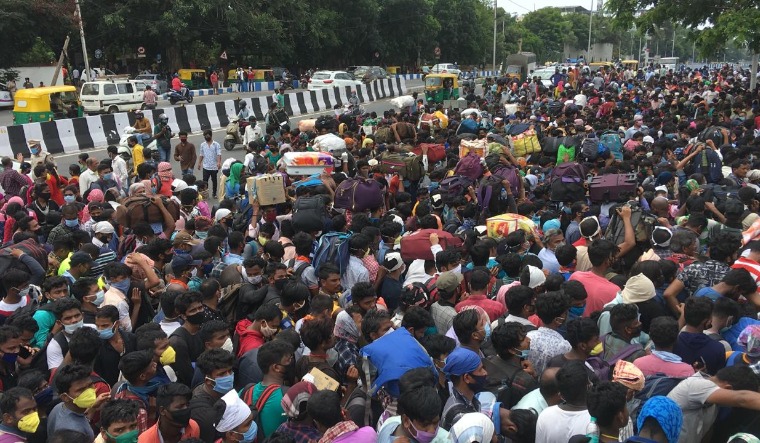India is increasingly becoming a hot spot for crowd accidents, with religious festivals emerging as the most likely situation to result in a dangerous crush, according to a study.
The researchers created the most comprehensive database of deaths and injuries caused by crowd accidents ever compiled, which they hope will improve safety at mass gatherings across the world.
The directory features details of 281 major global incidents occurring between 1900 and 2019 that resulted in at least one death, or 10 people being injured.
"India and, to a somewhat lesser extent West Africa, appear to be hot spots for crowd accidents. These are rapidly developing regions, with a quick increase in population and where infrastructure is struggling to keep pace with the inflow of people from rural to urban areas," said Milad Haghani from the University of New South Wales (UNSW), Australia.
"Northern India, in particular, is a densely populated area with solid religious traditions leading people to gather in millions over short period of times," Haghani said in a statement.
The study, published in the journal Safety Science, found that almost 70 per cent of the accidents which occurred in India between 2000 and 2019 were related to religious events.
Many of those accidents occurred close to rivers or in areas near water, according to the researchers, including those from the University of Tokyo, Japan.
Accidents have frequently occurred on bridges -- which act as a bottleneck -- at ferry terminals or on riverbanks where people enter the water to later reverse their direction, thus creating a complex and conflicting motion pattern.
However, train stations or transportation terminals have also often been the theater for disasters in the region, they said.
"I think the problems we see from the data in India, where there are a large number of accidents linked to religious festivals, is mostly about financial constraints," Haghani said.
"They know these deadly crowd events are happening and they know they should be doing something more, but probably they do not have access to the same money and the same technology that is available in wealthier countries," he added.
Haghani also noted that there is a difference in the level of knowledge in terms of crowd safety at religious festivals compared to sports events. Apart from India, the other areas where numerous deadly incidents have occurred in the past few years include South-East Asia and the Middle East.
Overall, serious crowd accidents across the globe have risen dramatically over the past 20 yearsfrom an average of around three per year between 1990 and 1999, to nearly 12 per year between 2010 and 2019, the researchers said.
They acknowledged that some of these numbers may be due to the growth of the internet and social media which ensures incidents are more widely reported.
"Just in the past 20 years alone around 8,000 people have been killed in crowd accidents and more than 15,000 have been injured," Haghani said.
"Over time, the share of sport events in crowd accidents has declined, and instead, religious gatherings have become more notably present in the statistics," the researcher added.



